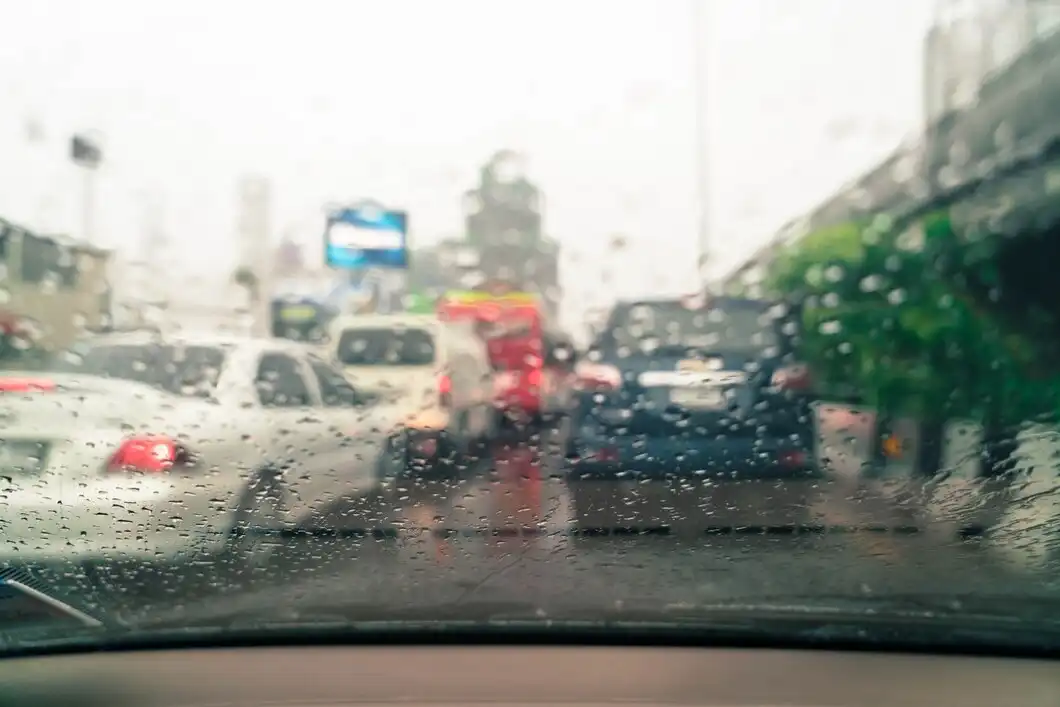Driving during inclement weather is not safe, particularly in California, where rainstorms, thick fog, and isolated snow create unsafe conditions on the roads. Low visibility, slippery roads, and erratic drivers heighten the risk of accidents. Indeed, weather-related accidents cause thousands of accidents annually in California. The safest way to travel is to be prepared, so here’s what you should know before you hit the road.
1. Always Check the Weather Before You Drive
Before leaving, take a minute to review weather conditions on quality websites such as the California Department of Transportation or the National Weather Service. If bad weather is predicted, it’s better to wait for the conditions to improve. The majority of accidents could be prevented if drivers would just wait for better conditions.
2. Keep Your Vehicle in Top Shape
A properly maintained vehicle is your best protection against inclement weather. Before you leave, be sure to check:
- Tires: Sufficient tread depth and pressure prevent skidding, especially on rainy California highways.
- Brakes: Responsive brakes are crucial on slippery roads.
- Windshield Wipers and Defrosters: Clear vision is a matter of life and death.
- Lights: Headlights, brake lights, and turn signals increase your visibility to others.
- Battery: Battery life is sapped by cold temperatures, even in mountainous regions such as Lake Tahoe, so make sure your battery is healthy.
3. Slow Down & Keep a Safe Distance
Speeding in bad weather is a recipe for disaster. Roads become slick, making it harder to stop quickly. The California Highway Patrol and DMV recommend maintaining at least a three-second following distance in wet conditions — double that in ice or snow. Slowing down and leaving extra space could save your life.
4. Use Your Headlights, But Not Your High Beams
California law requires drivers to use their headlights during rain, fog, and low-visibility conditions. However, avoid high beams in fog or heavy rain, as they can reflect off moisture and reduce visibility even more.
5. Avoid Sudden Movements
Sharp turns, quick acceleration, and sudden braking can cause your vehicle to skid out of control. Drive smoothly and brake gently to maintain traction. If you do start to slide, steer into the skid and avoid overcorrecting.
6. Watch Out for Black Ice and Slippery Surfaces
In California, black ice is especially common in higher elevations like the Sierra Nevada or Grapevine area. Bridges and overpasses freeze faster than regular roads. Be extra cautious in these areas. If you hit black ice, ease off the gas and keep your steering steady because panicking and jerking the wheel could make things worse.
7. Pull Over If Conditions Become Too Dangerous
Pulling over is the safest course of action if the weather is too bad. Turn on your warning lights, find a secure location, and wait until things get better. No place is worth putting your life in danger for.
8. Legal Consequences of Weather-Related Accidents in California
Some drivers assume bad weather excuses reckless driving, but California law holds drivers accountable for failing to adapt to conditions. If another driver caused an accident by speeding, tailgating, or failing to maintain control, you may be entitled to compensation for your injuries.
FAQs
- Can I still be held liable for an accident caused by bad weather?
Yes. Under California Vehicle Code Section 22350, drivers must adjust their speed to match weather and road conditions. If you were driving too fast for the conditions, you could be found partially or fully at fault.
- What should I do if I’m in an accident caused by bad weather?
- Call 911 if there are injuries.
- Exchange information with the other driver.
- Take photos of the accident scene.
- Seek medical attention even if you feel fine.
- Contact an injury law firm to discuss your legal options.
- Can I file an insurance claim for a weather-related crash?
It depends on the circumstances and your insurance coverage. A car accident lawyer can help you navigate your claim and ensure you’re not unfairly blamed.
- How do I prove I wasn’t at fault?
Dashcam footage, witness statements, and accident reports can help support your case. A skilled attorney can help gather evidence to prove negligence.
Get Legal Help After A Weather-Related Car Accident

You may feel traumatized, overwhelmed, and uncertain about what to do after being injured in an accident. You need someone to stand up for your rights. You don’t have to navigate this challenging time alone. Let car accident lawyers handle the legal intricacies while you focus on your recovery.

